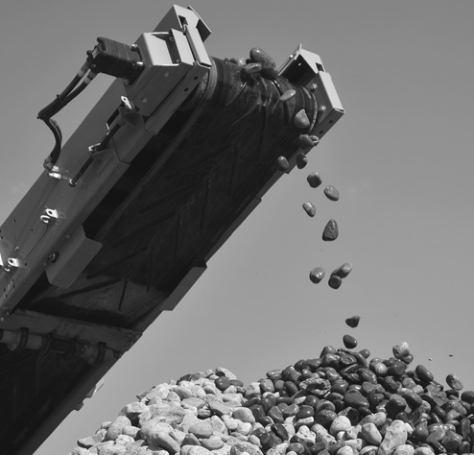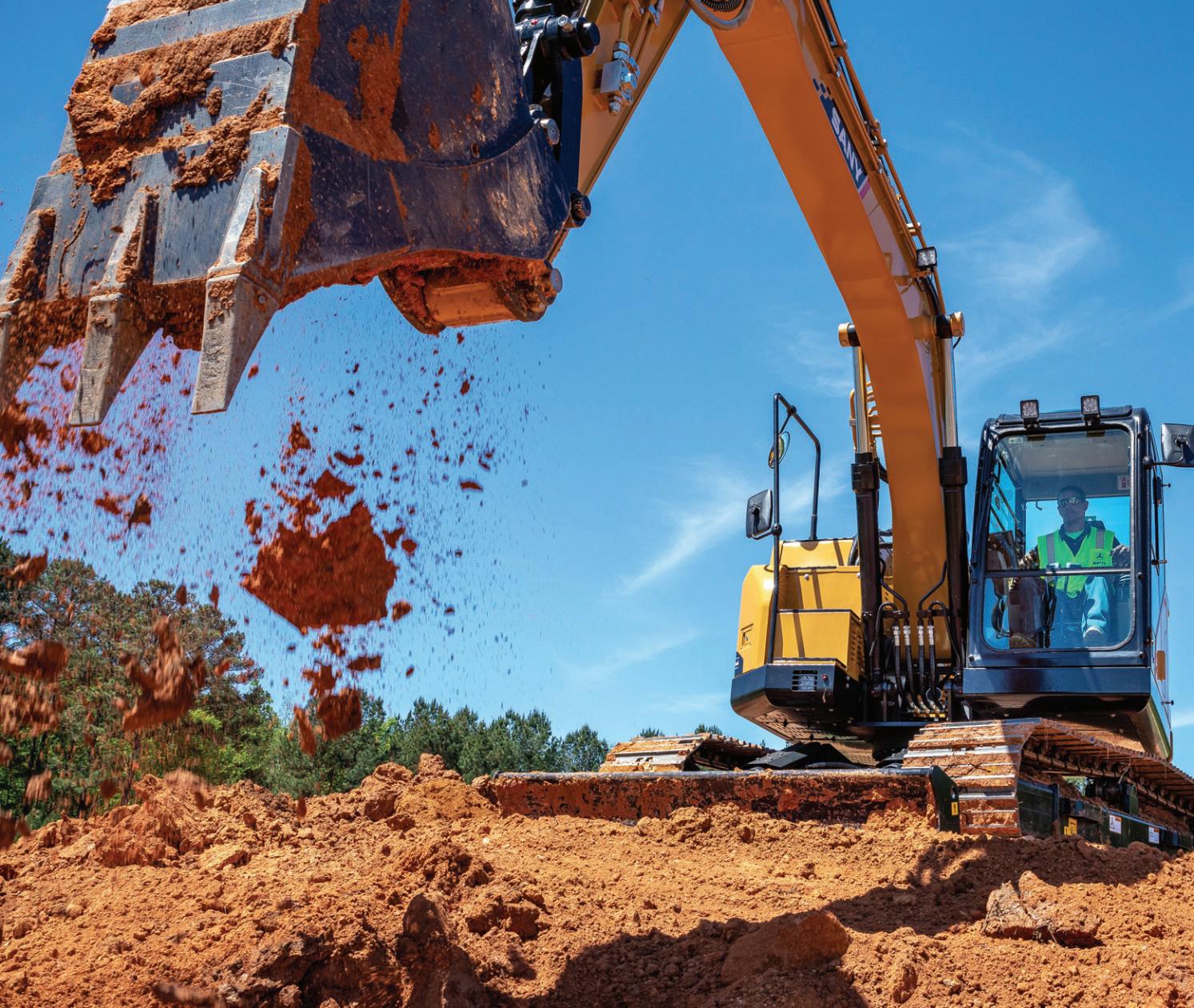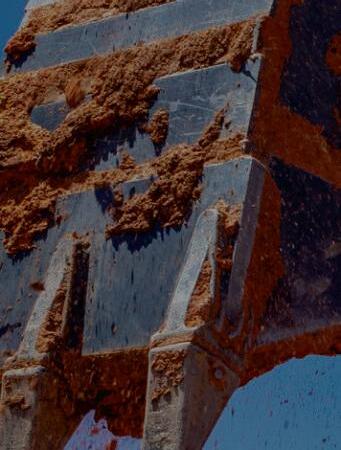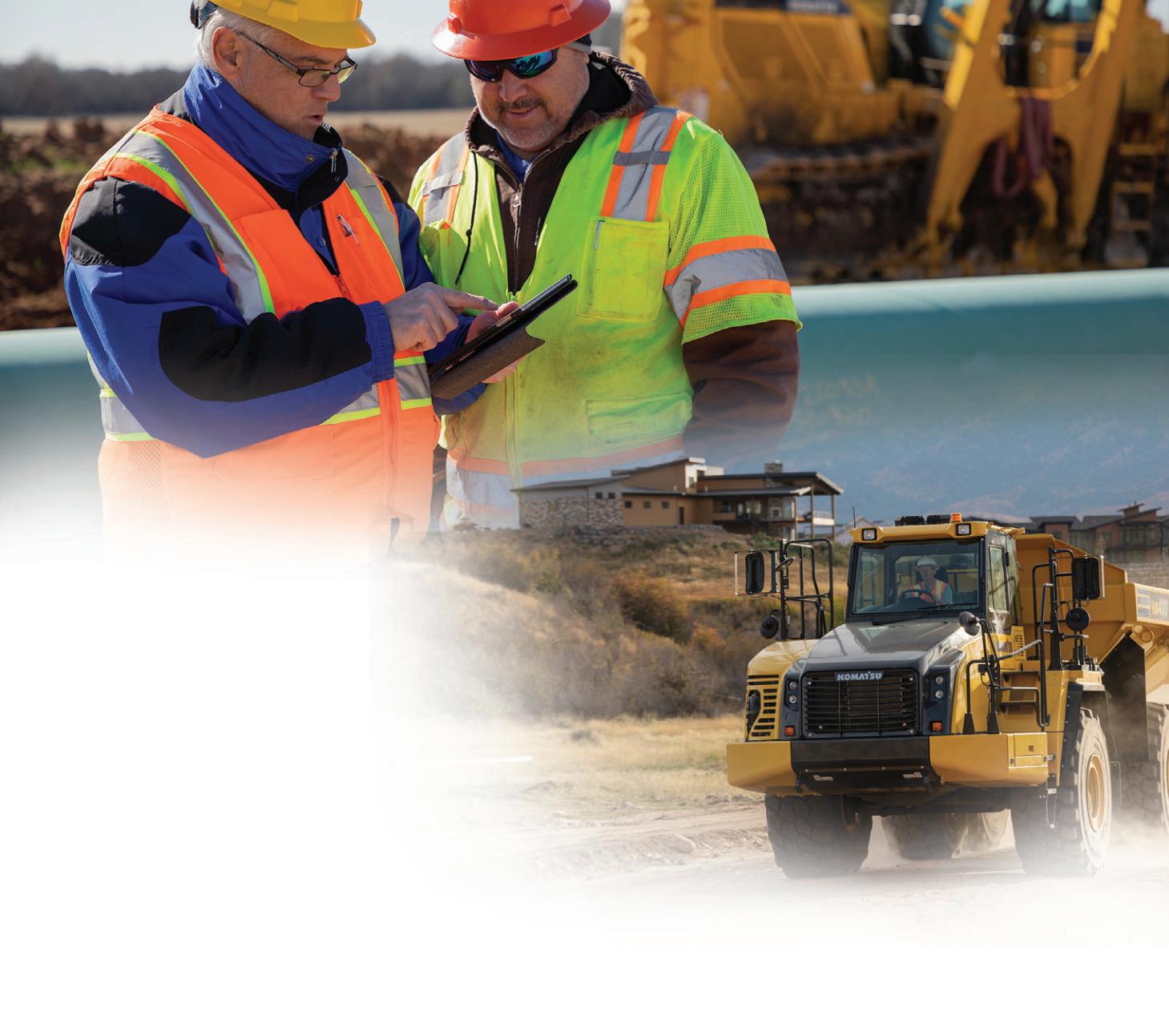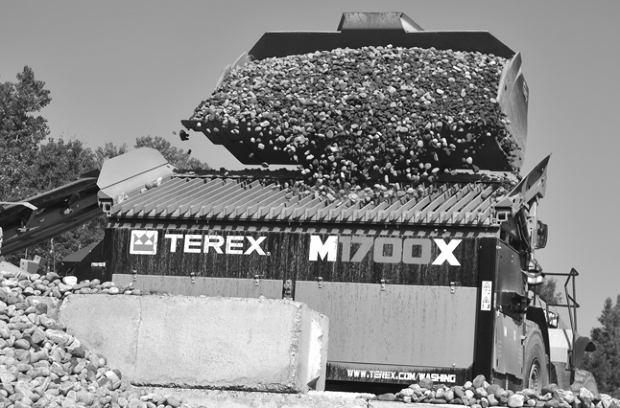
3 minute read
DeFeo’s Stone Comes FromApproximately Six Gravel Pits
DEFEO from page 34
At that point, DeFeo knew it had tapped into a great market, and it has been exploding ever since. But to properly serve the market, some changes needed to be made in the mode of transportation.
“As we started to develop the market with more and more customers, we realized that this just wasn’t going to happen with truck delivery,” DeFeo said. “People don’t want to drive trucks over the road anymore, and there are not enough bulk commodity trailers. Frameless dump trailers are how the majority of bulk commodities are transported. There are just not enough trucks available to move our type of material in the volume that we need transported, and still be able to do it economically.
“There are not enough loads of other bulk commodities heading north to bring back the trailers, so you have no backload, which skyrockets your transportation costs. The other issue, and it is a constant problem with hauling over the road, is battling the strict rules and regulations with DOT, equipment breakdowns and the general cost of trucks and trailers, which are increasing at an unbelievable rate.”
DeFeo was determined to find a way to work around this transportation challenge.
“I have always loved working with big equipment and have been fascinated with the idea of producing products in large volume. I’m a numbers guy, so it was something that I could break the numbers down and analyze.
“The supply of natural minerals and stone in the northeast is abundant.As a teenager, I was in the landscaping business and really liked the way decorative stone looks when it is applied, particularly in commercial applications, around medians, apartment complexes and hotels. I think it’s a great touch to the property and doesn’t look old after only a couple months like mulch.”
“We were told by our customers that when other quarries run out of decorative stone, they throw up their hands and turn away customers rather than finding a solution to produce more product. I realized that if we could use technology, it would help improve efficiency and we could tap into a market with huge potential. But we first had to figure out the issue of transporting our product 800-plus miles.”
DeFeo then started hiring out trucks and building a network of trusted subcontractors, like Taylor Trucking, RLO Trucking and many more to be able to grow the volume of stone, without spending more capital on additional company owned trucks.
“They typically will each take about two loads a week and that represents a good amount of tonnage for us, but it still was not enough to satisfy what I was trying to build. The game changer was in 2020 when we started shipping by rail. We invested every last dollar, even sold a portion of the company to investors to build a loading area at our Utica, N.Y., rail yard. The first year we transported about 3,800 tons of our product by train and by the end of this year it will be around 75,000 tons.”
Once rail transportation and its benefits were implemented, it was a huge challenge, but a total game changer. DeFeo now has sites located with railway access along the east coast, where they stockpile product and use their fleet of equipment to load and unload their fleet of rail cars, where it is then shipped to various distribution yards and delivered in the southeast.
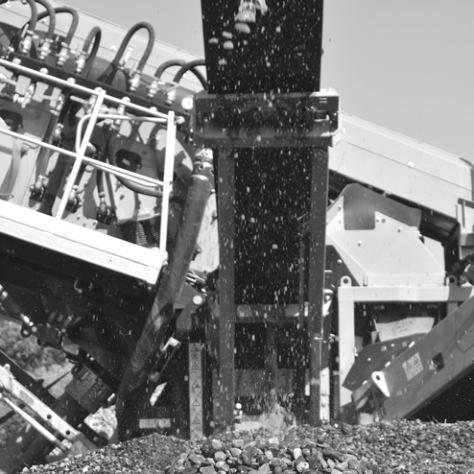
Even with the implementation of rail distribution, DeFeo still has challenges to overcome. Distribution from the rail depots to the end user and getting orders filled within its goal of a 10-day time limit is particularly challenging when you’re moving thousands of tons of stone thousands of miles. Quality control also is essential — the stones must be sorted correctly by size, and they must be clean.
DeFeo’s largest distribution point is in Utica, N.Y., from which it ships its most popular product, New England River Rock. It has other smaller loading facilities in New England from which it distributes some of its smaller volume products.
Utica has been an ideal location for DeFeo, even though the company is New England-based, as the northeast provides the ideal glacier created, multi-colored stones that its customers are looking for.
“The Mohawk and Northern Adirondack Railroad (the railroad in which DeFeo ships from) treat us very well. They appreciate our business and we have become one of their largest customers. Anything that we need they have been willing to work with us on.”
“In Utica, our current storage is about 12,000 tons. It could be more; but our production is limited by the weather. In this region you can only produce for about seven months out of the year, as the winters are harsh and the cold temperatures do not allow us to screen any product.”
A significant portion of its product is sent to DeFeo’s yards in North Carolina. DeFeo additionally works alongside Vulcan Materials, at their Mount Holly, SC rail yard, who handles the distribution of DeFeo’s product in the Charleston and Savannah regions. This allows customers in these areas to pick up their most popular product, New England River Rock.
When asked where their material comes from DeFeo said, “Our stone comes from about six different gravel pits that we work closely with. I like to describe these gravel pits as family-owned mom-and-pop type shops.They really are focused on just being able to get the sand out to sell to concrete plants.”
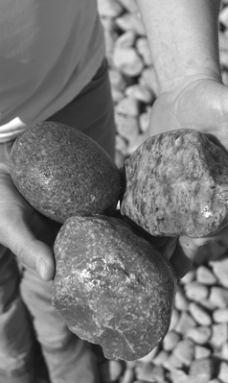
“We are purchasing from them a byproduct of sand production, any gravel that is above half an inch. We can’t pull it all from just one location because number one, there’s just see DEFEO page 94
